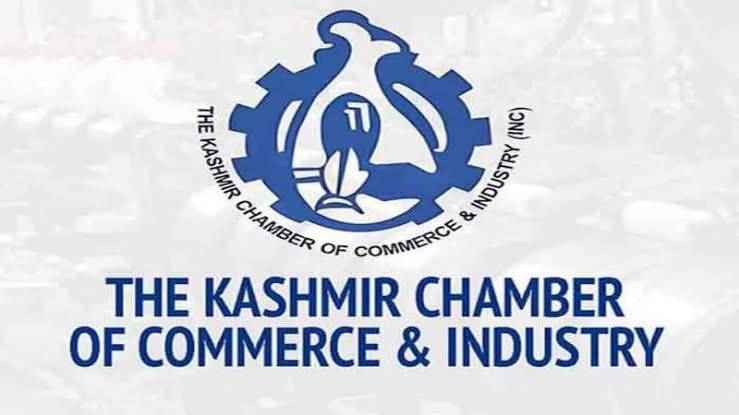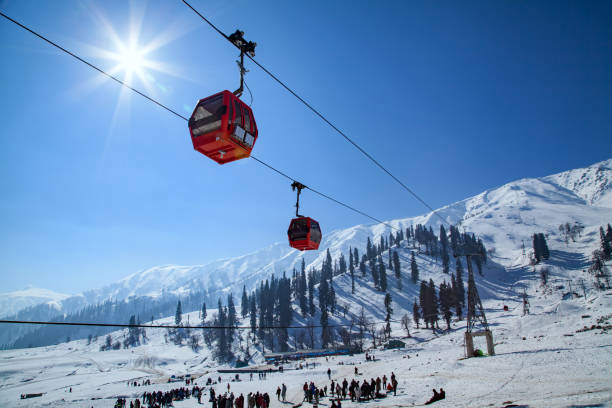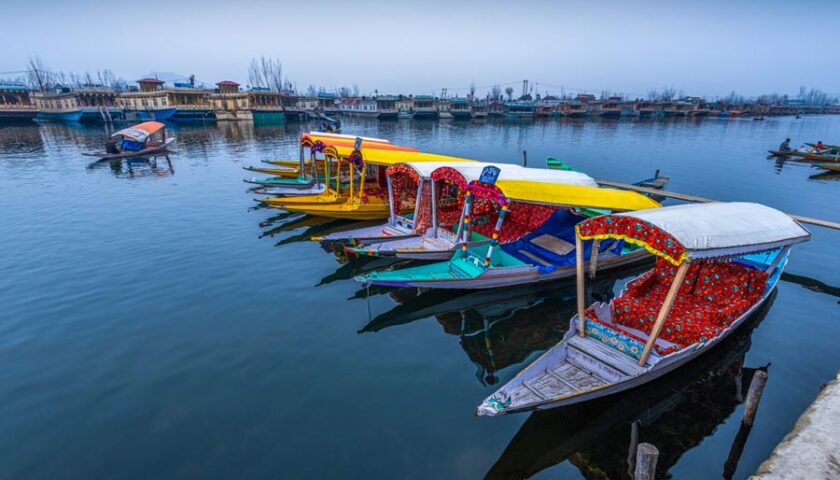Srinagar ED Conference Signals Stability: A Post-Pahalgam Turning Point for Jammu & Kashmir
By: Javid Amin | 16 September 2025
A Symbolic Gathering in the Valley
Srinagar wore a look of quiet determination as the Enforcement Directorate (ED) held its 32nd quarterly conference of zonal officers on September 12–13, 2025. On the surface, it was just another bureaucratic exercise—an internal meeting to deliberate on matters related to the Prevention of Money Laundering Act (PMLA).
But in Kashmir, symbols matter as much as substance. The very fact that this high-profile event took place in Srinagar, just months after the Pahalgam terror attack that killed 25 tourists and a pony operator, made the conference far more than a routine gathering.
It became a political and security statement: that Jammu & Kashmir is safe, resilient, and open for national deliberations.
“The successful completion of this conference demonstrates that Jammu & Kashmir is ready to host national and international deliberations,” the ED said in a statement—words carefully chosen, aimed not just at bureaucrats but at the nation and the world.
The Conference: What Happened Inside
The two-day conference was chaired by ED Director Rahul Navin and attended by senior officials from across India. Discussions centered around:
-
Financial crime investigations under PMLA.
-
Coordination with state agencies on money laundering cases.
-
Strengthening digital tools for financial intelligence.
-
Improving inter-agency collaboration across zones.
For the ED, the conference was about operational efficiency. But for Kashmir, it was about national recognition, inclusion, and normalcy projection.
Holding the meeting in Srinagar, rather than Delhi or Mumbai, signaled that the Valley is no longer viewed purely through the prism of conflict—but as a viable host for national governance and policy exercises.
Why Srinagar? The Symbolism of Location
Kashmir has long been associated with unrest, insurgency, and security risks. High-profile events are usually shifted to metros like Delhi, Hyderabad, or Bengaluru. By deliberately choosing Srinagar, the government and the ED sent multiple messages:
-
Security Confidence: That the Valley can host central-level gatherings without incident.
-
Political Will: That Kashmir is not to be isolated, but integrated into India’s mainstream governance.
-
Post-Pahalgam Resilience: That terrorism will not dictate national agendas.
-
Economic Signal: That tourism, trade, and investment in Kashmir need stability cues from the state.
Chief Minister Omar Abdullah, who reportedly wrote to the Centre urging departments to hold high-level events in J&K, framed the conference as a strategic step in public trust restoration.
The Shadow of Pahalgam
The backdrop to this conference cannot be ignored: the April 22 Pahalgam attack. In one of the deadliest assaults in recent years, terrorists targeted a group of domestic tourists, killing 25 people and a local pony operator. The tragedy sent shockwaves across India, denting Kashmir’s fragile tourism season.
India’s response was swift and severe. Operation Sindoor, a series of retaliatory strikes on Pakistan-based terror camps, restored some sense of control. Border security was reinforced. Checkpoints were tightened. Surveillance drones buzzed over critical zones.
Still, confidence was shaken. The Srinagar ED conference, therefore, became part of a broader recovery narrative: to show the world that terror cannot dictate Kashmir’s destiny.
Political Backing and Corridor Reactions
The conference also had a political dimension. Leaders across parties saw it as both a reassurance and a test of intent.
-
Omar Abdullah (CM, J&K): Welcomed the decision, stressing that J&K must host not just conferences but investor summits, cultural festivals, and academic forums to rebuild trust.
-
Mohammad Yousuf Tarigami (CPI-M): Cautioned against symbolism alone. “Hosting a meeting is not enough. The state must invest in infrastructure, employment, and farmers’ welfare. That is real confidence-building.”
-
Aga Ruhullah (NC MP): Framed it politically, noting that while symbolism matters, Kashmiri people must feel included in governance—not just showcased as backdrops for national events.
Opposition leaders also warned against over-reliance on optics, pointing to Kashmir’s ongoing crises in horticulture, mutton supply, and highway blockades that demand practical solutions.
Security and Confidence-Building Measures
The ED conference is part of a larger pattern of symbolic statecraft in J&K. Over the past decade, the government has strategically hosted events in Kashmir to project normalcy:
-
G20 Tourism Working Group meeting (2023) in Srinagar.
-
Film shoots by Bollywood and OTT platforms, encouraged with subsidies.
-
National cricket tournaments hosted at Sher-i-Kashmir stadium.
-
Cultural festivals featuring Kashmiri crafts, Sufi music, and winter sports in Gulmarg.
Each event is carefully choreographed to send a message: Kashmir is safe, vibrant, and open for business.
The ED conference fits neatly into this playbook. But unlike cultural or tourism events, it added a layer of bureaucratic legitimacy: placing Srinagar on the map of India’s policy and governance ecosystem.
Impact on Tourism and Local Economy
Tourism remains Kashmir’s economic backbone. Confidence-building gestures directly affect hotel bookings, airline schedules, and local livelihoods.
-
Houseboat owners in Dal Lake report that national-level events lead to a surge in inquiries.
-
Hotel associations say occupancy spikes when Kashmir is in the news for positive reasons.
-
Travel operators like JKL Travels and Kashmir Travels use such events in their marketing campaigns to reassure domestic tourists.
For fruit growers, artisans, and transporters, stability translates into predictable trade flows. When investors and tourists see officials holding conferences in Srinagar, they see a Valley worth trusting again.
Case Studies: Voices from the Ground
-
Shabir Ahmad, Hotelier (Srinagar): “When Delhi officers hold meetings here, it sends a message stronger than any advertisement. Guests ask me: ‘If it’s safe for them, it must be safe for us too.’”
-
Haleema Bano, Orchard Owner (Shopian): “Our apples rot on the highway because of blockades. A conference is good, but real help is cold storage and dedicated corridors.”
-
Imran Dar, Student (Srinagar University): “For us, it is about feeling part of India’s system. Not just being studied, but being included.”
These narratives underline the duality: symbolism helps, but substance sustains.
Criticism and Skepticism
Not everyone is convinced. Critics argue that one-off events cannot mask structural issues:
-
Frequent highway closures choking trade.
-
Unemployment among youth despite heavy security spending.
-
Lingering mistrust after decades of conflict and political alienation.
“The government must go beyond optics,” says political analyst Noor Ahmad Baba. “Symbolic events are good, but what matters is whether an apple grower in Shopian or a shawl weaver in Budgam feels change in daily life.”
Policy Dimensions: Beyond Symbolism
For Kashmir to truly emerge as a stable and confident region, experts highlight three policy priorities:
-
Infrastructure Resilience: Reliable highways, cargo trains, and cold storage for horticulture.
-
Economic Diversification: From apple orchards to IT parks, handicrafts to winter sports.
-
Political Inclusion: Dialogue with local leaders, space for democratic dissent, and trust in institutions.
Events like the ED conference can act as triggers, but only sustained governance can build a long-term stability narrative.
Looking Ahead: A Valley at the Crossroads
The ED conference in Srinagar will be remembered not for its internal deliberations on money laundering—but for its symbolism in Kashmir’s story.
It showed that national institutions are willing to engage with J&K not as a conflict zone, but as a partner in governance. It reassured some, raised questions for others, but undeniably marked a post-Pahalgam milestone.
The Valley now stands at a crossroads:
-
One path leads to sustained inclusion, economic revival, and trust-building.
-
The other risks reducing such events to mere optics, with no real change on the ground.
As the Dal Lake reflects the conference lights fading into September nights, one truth stands clear: symbols can open doors, but only substance can keep them open.




